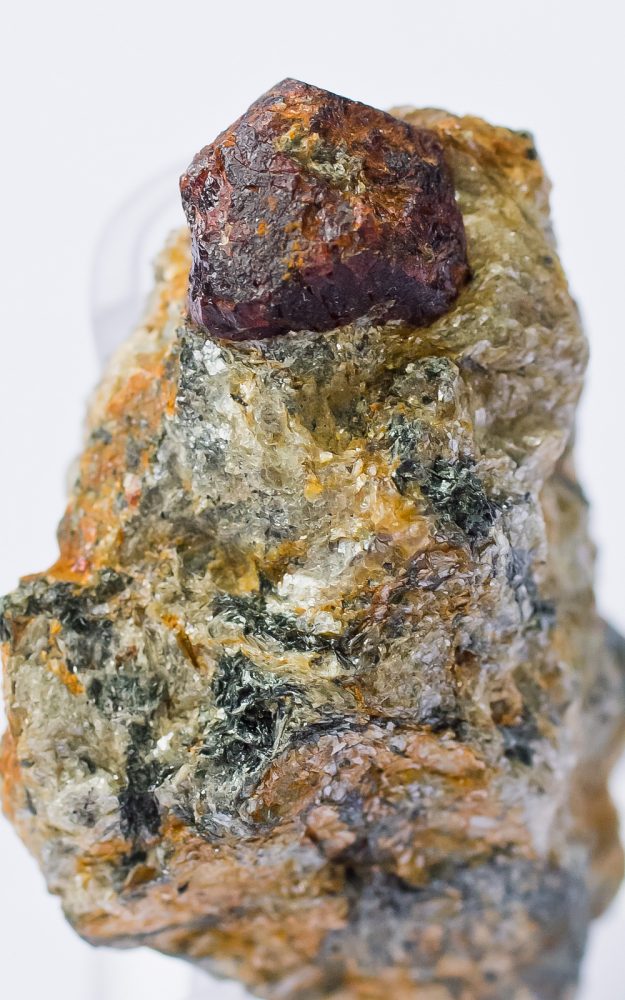This week the mineral spotlight is garnet, a very versatile and beautiful mineral. Garnet is a silicate mineral with general formula X3Y2(SiO4)3. The variations of elements in the X and Y spots in the formula make six different varieties of garnet, which are distinguished by color.
Pyrope is dark red, almandine is a purple red, spessartine is orange yellow, grossular is green yellow, uvarovite is a deep green and andradite is a grayish brown or black. Of these six varieties, almandine and andradite are the most commonly found.
Garnet has a dodecahedral crystal habit, meaning it has 12 faces that are usually pentagonal. It is in the isometric crystal system, which is sometimes called the cubic system, which means it has the greatest possible symmetry for a mineral.
It has a hardness of 6.5 to 7.0 on the Mohs scale and usually has a glassy luster. It sometimes has a conchoidal fracture but usually has an uneven fracture, meaning it doesn’t break apart with any sort of regularity or pattern.
Garnet is also a very useful geologic tool, as it can be used to determine the pressure and temperature conditions under which certain metamorphic rocks were formed. For instance, pyrope garnets are usually only found in rocks formed under high temperatures and pressures.
Pyrope is often associated with diamonds in kimberlites, which are rocks that come from Earth’s mantle. Because of its hardness and beautiful nature, garnet is also often used in jewelry, especially the relatively rare uvarovite form, and is the January birthstone in the United States.
Also because of its hardness, industrial grade garnet is crushed and used for abrasives such as sand paper. We have garnets of a few different forms in Calvin’s collection, and the uvarovite sample is especially stunning.








